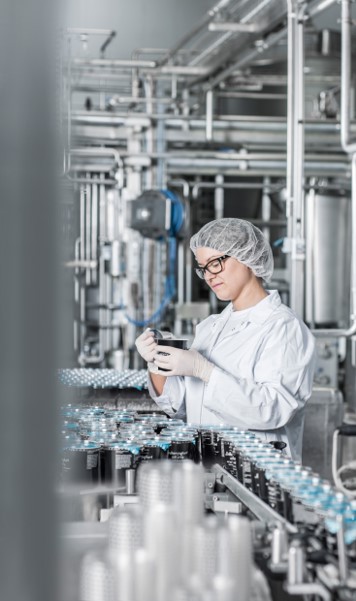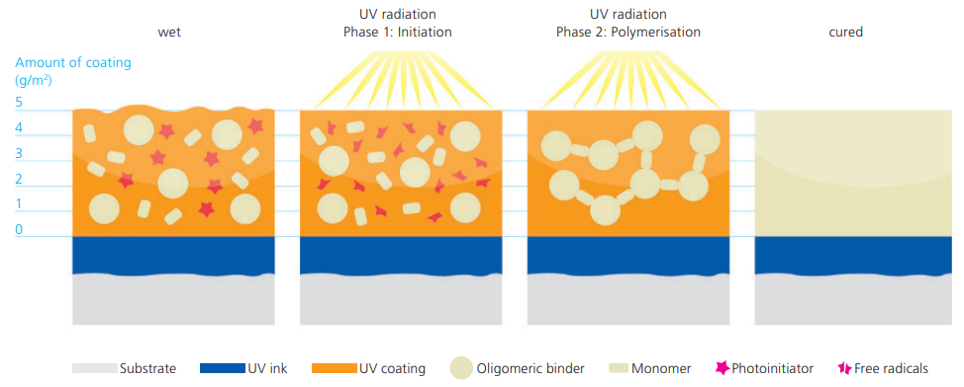

软质包装业务部
阿塔卡为客户提供订制的油墨、涂料和粘合剂解决方案,是软包装领域的领先者。
查看更多您已经订阅了我们的实时资讯。
act.page.footer.newsletter.message.success.unsubscribed
act.searchemptypage.buttonInsufficient curing of UV coatings is the cause of many complaints within the graphic arts industry. Missing scuff resistance, blocking of sheets in the pile or odour problems are only some examples that may influence the quality of your printed products. Additionally, there is the danger of migration. Migration can be the result of an insufficient cross-linkage of the coating layer. If the necessary curing level is not reached, photoinitiators remain uncured which may lead to migration.

UV lamps and reflectors are important elements within your production process. Use the appropriate lamps. The energy need of inks and coating must be covered. Regularly check the performance of your lamps and reflectors. Clean them efficiently and in regular intervals or change them if necessary. Adapt radiation and wave length to each other and check the distance between UV lamp and substrate surface.
The performance of your printing press and especially the combination of press speed and lamp performance represent important production parameters. In general: High ink and coating coverage needs more energy than low ink and coating coverage. Pay attention to a sufficiently long curing distance.
UV coatings are characterised by different reactivity. The more reactive a coating, the faster it is cross-linked. Here, photoinitiators are the reaction trigger. Please contact our Technical Services for a consultation.
Using UV equipment, i.e. UV inks and UV coatings, you may face the following risk: The coating may penetrate into the substrate on unprinted areas or areas with a low ink coverage. There, the coating can only cure insufficiently. This problem may especially appear using absorbant substrates. Thus, apply high-value board with surface characteristics that only show a low penetration potential.
There are various possibilities, i.e. analysis methods, of controlling the curing level. Generally, we distinguish between subjective methods and objective methods. A subjective method that can be done directly at the printing press refers to the fingernail test. Here, the coating’s curing is evaluated by means of visual impression after scratching the surface with a fingernail. The acetone test provides information on the curing level, also evaluated by means of the eyes. As a solvent, acetone can dissolve components that are not cured out of the coating layer. But: Better evaluation possibilities are offered by means of objective methods. The Robinson test consists of a standardized procedure and objectifies sensoric results. Additionally, the slip angle test is a good method for evaluating the curing level, as both factors are related to each other. If the coating surface is dull, a sufficient curing level cannot be expected. With the infrared spectroscopy (FTIR-analysis) you can evaluate your percental curing level. Here, not cured components of the coating layer are related to those reactive components that are generally existing in the wet coating.
Influence factor: UV lamps
Measure: Increase performance, clean, change if necessary
Influence factor: Reflectores
Measure: Check, clean, change if necessary
Influence factor: Printing press
Measure: Reduce speed
Influence factor: Coating
Measure: Choose suitable alternative
Influence factor: Substrate
Measure: Use alternative with low penetration potential
Still have open questions? Contact us and we will support you to find the best solution
CONTACT USThe Troubleshooting Series is your source of content with smart tips that helps you to make the most of all ACTEGA products in your processes. In addition to state-of-the-art chemical specialties for the packaging industries, we are your knowledge partner by offering you our technical expertise and useful information.
Discover all of our content